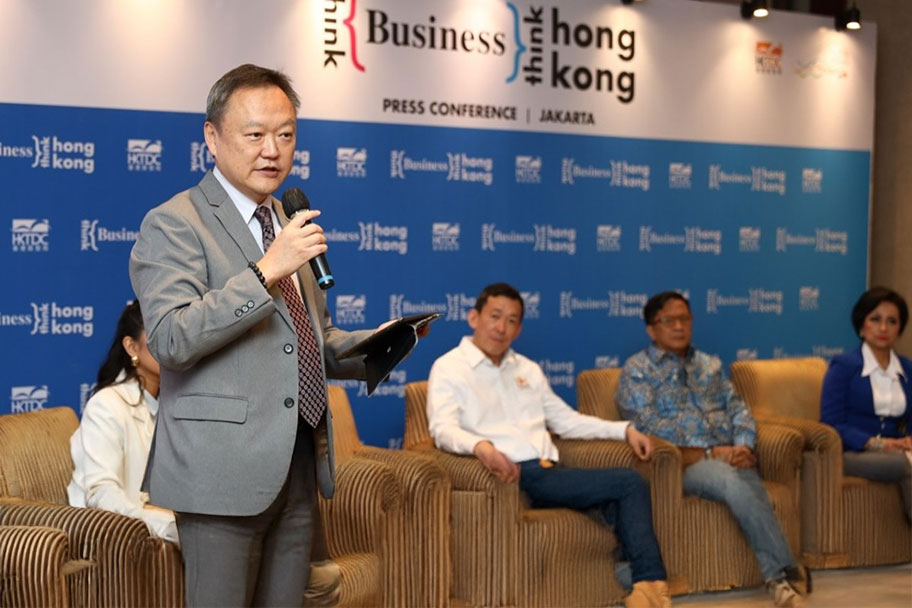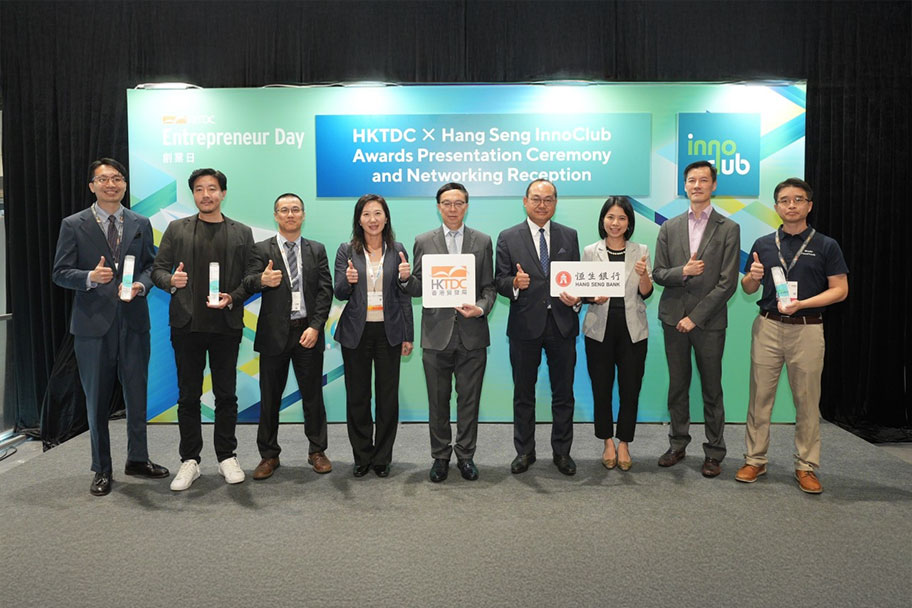Huayou Cobalt x Standard Chartered: Marching towards the world of New Energy
Huayou Cobalt x Standard Chartered: Marching towards the world of New Energy
New energy is fated to leave its mark in the history of carbon neutrality. On 22 September, 2020, China has pledged its commitment to peak carbon dioxide emissions before 2030 and achieve carbon neutrality before 2060 in the 75th Session of The United Nations General Assembly. Carbon neutrality will be the country’s long-term top priority, in which the development of new energy must be fully supported.
Qixue Fang, Vice Chairman of Huayou Cobalt noted that in the supply chain perspective, the upper stream raw materials of battery are the heart of new energy instead of Li-ion battery itself, as demonstrated by the global rise of raw materials price. With both cobalt materials and Li-ion batteries’ materials in hands, Huayou Cobalt holds the heart of new energy.
According to China Automobile Center, electric vehicles are expected to make up 40% of the global market by 2030. Within the annual sales of 100 million vehicles, 40 million will be new energy vehicles, demanding 4 million tons of battery raw material. Considering the trillion-dollar market, and as the holder of Li-ion battery material, Huayou Cobalt will therefore become the focus of the Li-ion battery industry.
Focus on New Energy from Cobalt to Lithium
The development of new energy gives birth to a list of “star enterprises”, such as Contemporary Amperex Technology in power battery field, Longi Green Energy Technology in photovoltaic field, and in the field of upstream new materials, Huayou Cobalt was born.
Founded 19 years ago in Zhejiang, Huayou Cobalt specialized in the mining, selection, and primary processing of cobalt and copper at the beginning of its establishment. After decades of expansion, Huayou Cobalt has made its way to the forefront of the global cobalt industry.
An outstanding enterprise can always adapt and strive for excellence regardless of the changing times and environment. When new energy was just emerging in 2015, Huayou Cobalt was listed on the main board of the Shanghai Stock Exchange, beginning its new stage of development. Qixue Fang said that, after 2018, with the bullish development of new energy industry, Huayou Cobalt changed its focus to downstream new energy Li-ion battery manufacturing and upstream nickel resource development, and placed Li-ion battery new energy material industry as the core business to be developed during the 14th Five-Year Plan (2021-2025) period with the goal of becoming the leader in the Li-ion battery industry.
Upstream Resources Controlling, Internal Capability Enhancing and Downstream Markets Development
Qixue Fang described their business strategy as “Upstream Resources Controlling, Downstream Markets Developing, Internal Capability Enhancing”.
Raw materials are the foundation of the development of Li-ion battery industry, and most of the Li-ion battery raw material resources are located overseas. In the past decade, Chinese enterprises have been actively pursuing overseas resources, and Huayou Cobalt has established three sourcing bases, including Congo (DRC) for copper and cobalt, Indonesia for nickel and cobalt, and Argentina for lithium.
Africa is rich in mineral resources, and Chinese enterprises have invested early on. After a decade of investment, Huayou Cobalt has built an ecology of metallurgy of cobalt and nickel resources, forming strong capabilities in resourcing and operation of mining and metallurgy integration, which provides a low-cost competitive advantage, stable and reliable raw material guarantee for domestic manufacturing platforms. Some secondary market analyst expressed that the copper-cobalt business is Huayou’s core safety net. In the view of rising copper-cobalt prices, there is huge possibility in the profit elasticity of the business.
Looking forward, Huayou is looking for the business’ second growth in nickel resources. Qixue Fang, who is experienced in overseas resource investment, led Huayou Cobalt to develop nickel resources in Indonesia market, opening a new route for the business’ second growth. Under the trend of high nickelization of ternary precursors and ternary materials, nickel will become a field with sizable room for growth, and the upstream nickel resources strategic planning not only ensure the supply of raw materials, but also reduce production costs. Due to the lack of domestic nickel mines, Chinese enterprises will have to focus on overseas market. Huayou Cobalt’s two laterite nickel mine smelting projects in Indonesia are expected to be the business’s key profit growth area in the future.
“Although Huayou Cobalt’s resources are located overseas, our business operation is in China”, said Qixue Fang. Industry experts have noted that Huayou is competitive in three main aspects. First is scale, through self-built and joint venture, the production capacity level is greatly improved, and it can quickly secure a place in the accelerated industry expansion. Second is cost, with the advantage of early investment in overseas mining to upstream metal raw materials industry, the important low-cost competitive advantage can be obtained in the precursor manufacturing market. Third is technology, Huayou Cobalt has continuously increased investment in scientific research and product research and development since 2017. Relying on vertically integrated industrial chain, advantage in the scale of new cobalt materials, and the accumulation of years of technology research and development in new energy ternary precursors, these three aspects of low-cost competition, sales channel construction, and product technology development have built a wall of protection against competition for Huayou Cobalt, pushing it to the forefront of Li-ion batteries materials industry.
The market is the source of corporate cash flow. Huayou has gained a stable and high-quality sales channel advantage through its strength in upstream resources, strong relationship with downstream cathode material customers through years of technology accumulation, establishing joint venture with LG Chem and POSCO, and acquiring Bamo Technology. It has also successfully entered the global mainstream battery and vehicle company supply chain system with the help of customer channels, whilst its market recognition continues to grow.
From Belt and Road to local servicing
Accounting for more than 95% of imports, Indonesia and the Philippines are the two major nickel resources importers of China. Particularly for Indonesia, as the largest laterite nickel ore resources in the world, holds more than 10% of the world’s laterite nickel ore reserves. The ores are relatively concentrated geographically, and the average grading is high. With 70% of nickel-related export products goes to China, Indonesia is the key target for Chinese enterprises to compete for nickel resources.
Southeast Asia is the pioneer region of the Belt and Road and is one of the regions with the closest tie in trade and investment with China. Huayou Cobalt’s investment in Indonesia is thus not just about the profitability, but rather a win-win cooperation with countries along Belt and Road. In Qixue Fang’s view, there are three main challenges encountered by Chinese enterprises in the process of overseas deployment. Firstly, cultural integration and mutual understanding need to be achieved. Secondly, Chinese enterprise need to familiarize and compliance with local laws and regulations; Thirdly, Chinese enterprises need to raise higher standards on themselves in terms of ESG, safety, and carbon emission reduction to achieve virtuous cooperation with the local economy.
Jean Lu, Head of Client Coverage, CCIB, Standard Chartered Bank (China) Limited, expressed that “Green” and “Sustainability” have become requirements for Chinese enterprises to develop locally in the Belt and Road market. “Under the context of ’3060’ dual carbon goal, Chinese enterprises’ ESG management and their overseas projects’ ESG information disclosure have become the focuses of local governments, communities, and international financial institutions.”
Jean Lu said that supporting Belt and Road green development is one of the key focuses of Standard Chartered, as more than 75% of the company’s global footprints overlaps with Belt and Road. Standard Chartered fully supports Chinese enterprises’ overseas and global expansion in green industries such as waste-to-energy, clean energy, and new energy vehicles. Standard Chartered has also established close cooperation with Huayou Cobalt and other Chinese enterprises to jointly support the development of new energy industries.
“Energy industry’s sustainable development will bring great opportunities to Chinese new energy enterprises. We will continue our collaboration with Chinese new energy enterprises including Huayou Cobalt to support many more Chinese enterprises to become the pioneer in the industry.”
This material has been prepared by one or more members of SC Group, where “SC Group” refers to Standard Chartered Bank and each of its holding companies, subsidiaries, related corporations, affiliates, representative and branch offices in any jurisdiction, and their respective directors, officers, employees and/or any persons connected with them. Standard Chartered Bank is authorised by the United Kingdom’s Prudential Regulation Authority and regulated by the United Kingdom’s Financial Conduct Authority and Prudential Regulation Authority.
This material has been produced for reference and information purposes only, is not independent research or a research recommendation and should therefore not be relied upon as such, and does not constitute an invitation, recommendation or offer to subscribe for or purchase any of the products or services mentioned or to enter into any transaction.
Some of the information herein may have been obtained from public sources and while SC Group believes such information to be reliable, SC Group has not independently verified the information. Information contained herein is subject to change at any time without notice. Any opinions or views of third parties expressed in this material are those of the third parties identified, and not of SC Group. While all reasonable care has been taken in preparing this material, SC Group makes no representation or warranty as to its accuracy or completeness, and no responsibility or liability is accepted for any errors of fact, omission or for any opinion expressed herein. The members of SC Group may not have the necessary licences to provide services or offer products in all countries, and/or such provision of services or offer of products may be subject to the regulatory requirements of each jurisdiction. Any comments on investment, accounting, legal, regulatory or tax matters contained in this material should not be relied on or used as a basis to ascertain the various results or implications arising from the matters contained herein, and you are advised to exercise your own independent judgement (with the advice of your investment, accounting, legal, regulatory, tax and other professional advisers as necessary) with respect to the risks and consequences of any matter contained herein. SC Group expressly disclaims any liability and responsibility whether arising in tort or contract or otherwise for any damage or losses you may suffer from your use or reliance of the information contained herein.
You may wish to refer to the incorporation details of Standard Chartered PLC, Standard Chartered Bank and its subsidiaries at http://www.sc.com/en/incorporation-details.html.
© Copyright 2022 Standard Chartered Bank. All rights reserved. Copyright in third party materials is acknowledged and is used under licence. You may not reproduce or adapt any part of these materials for any purposes unless with express written approval from a member of SC Group.




